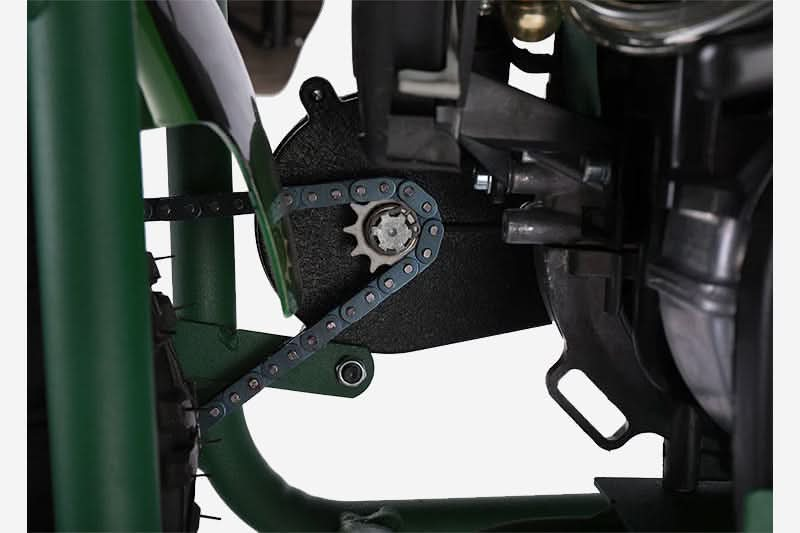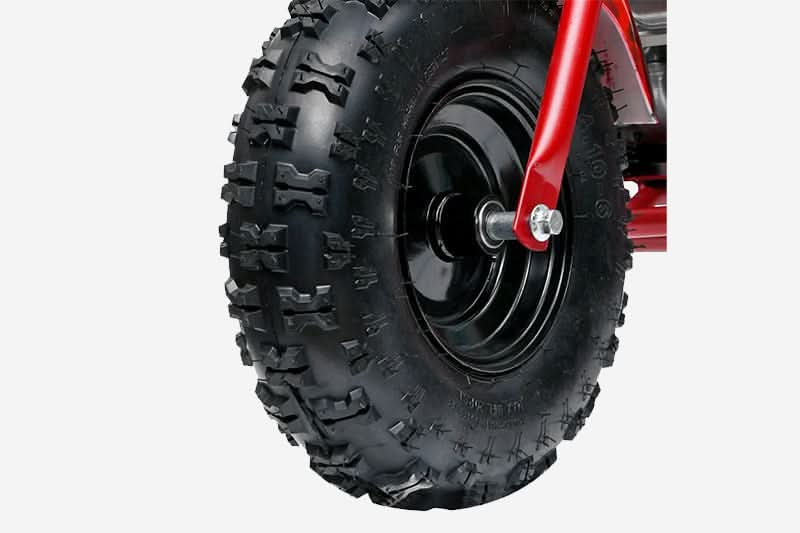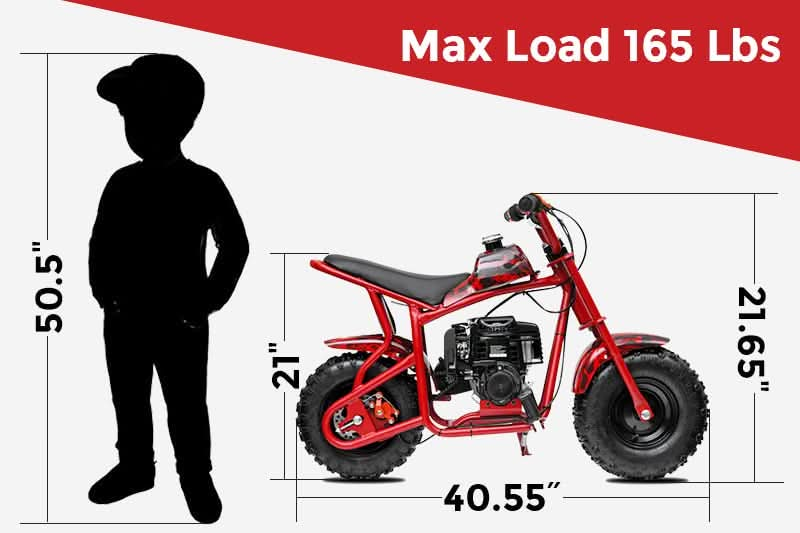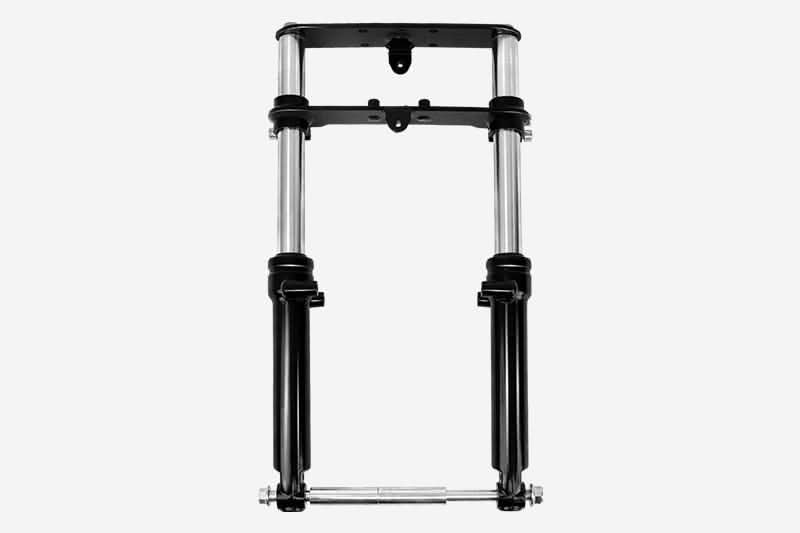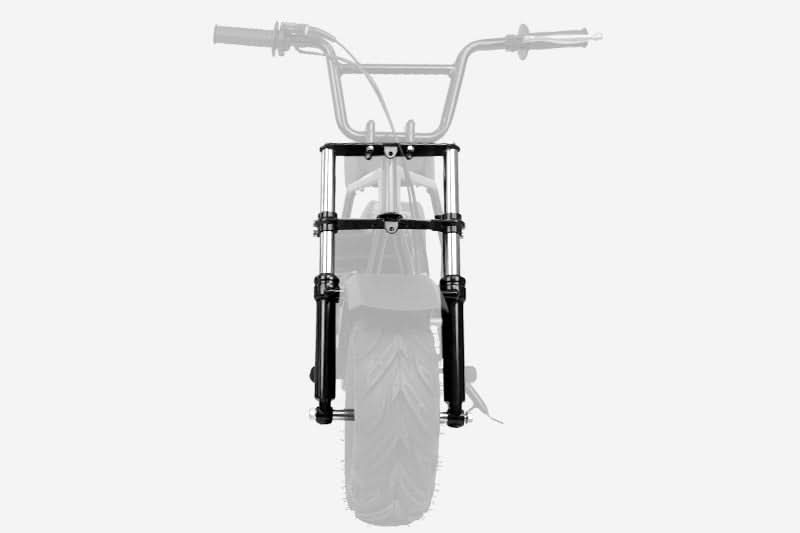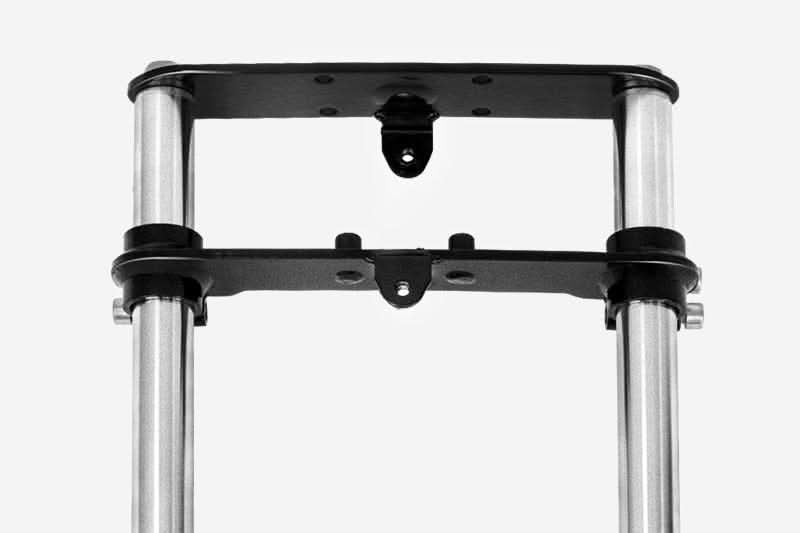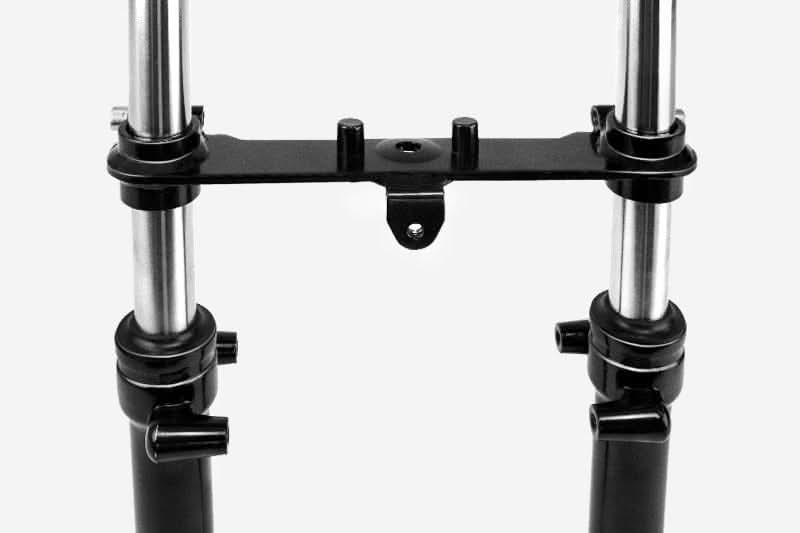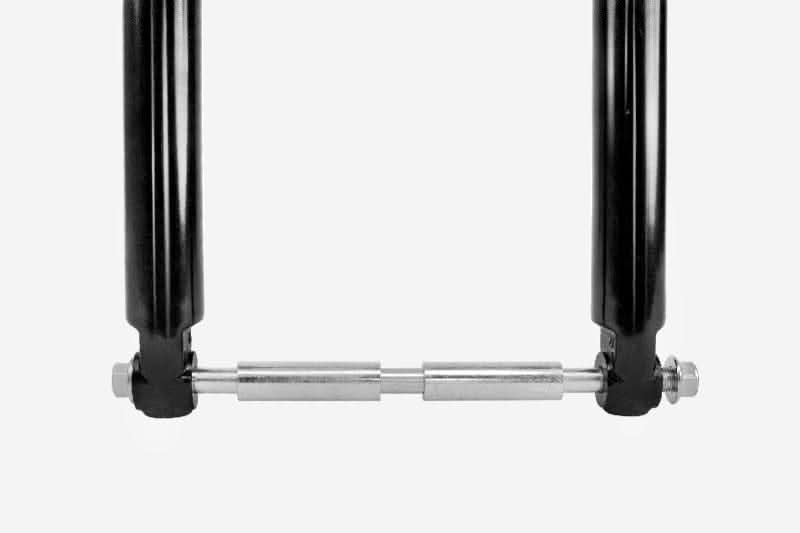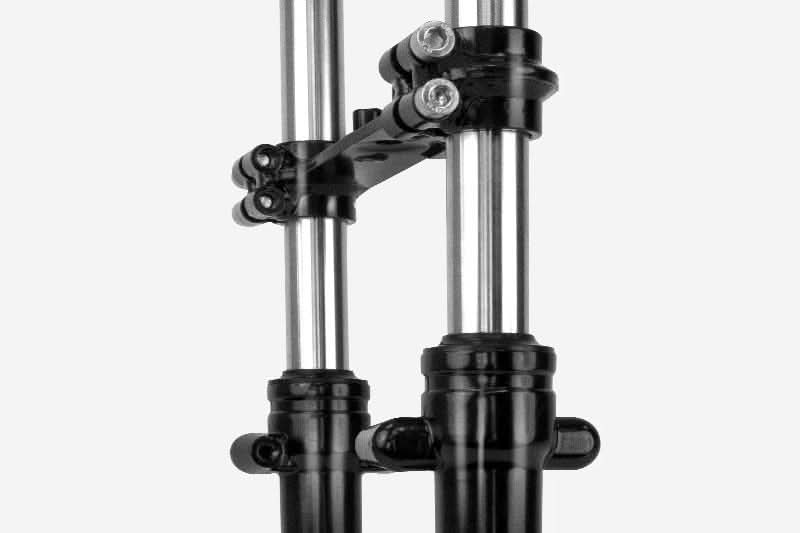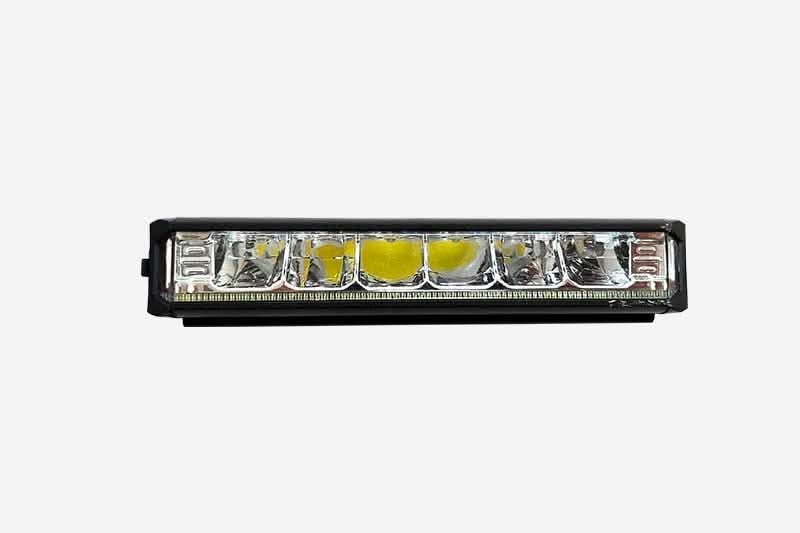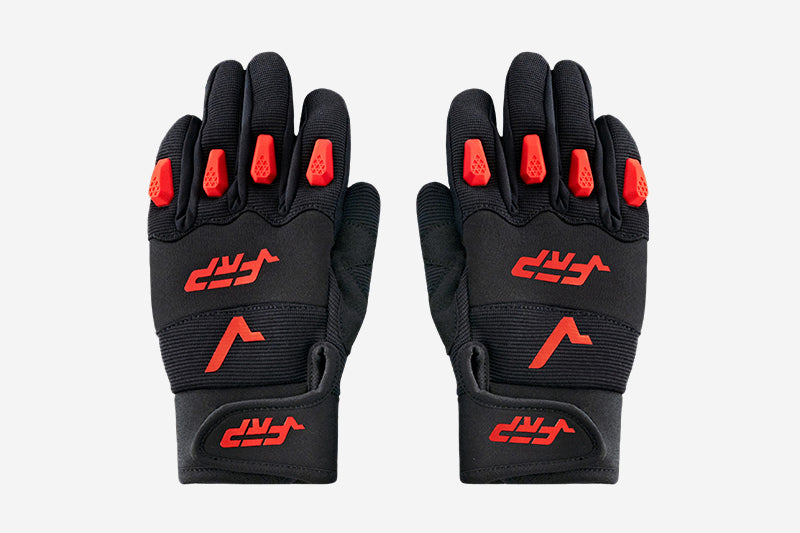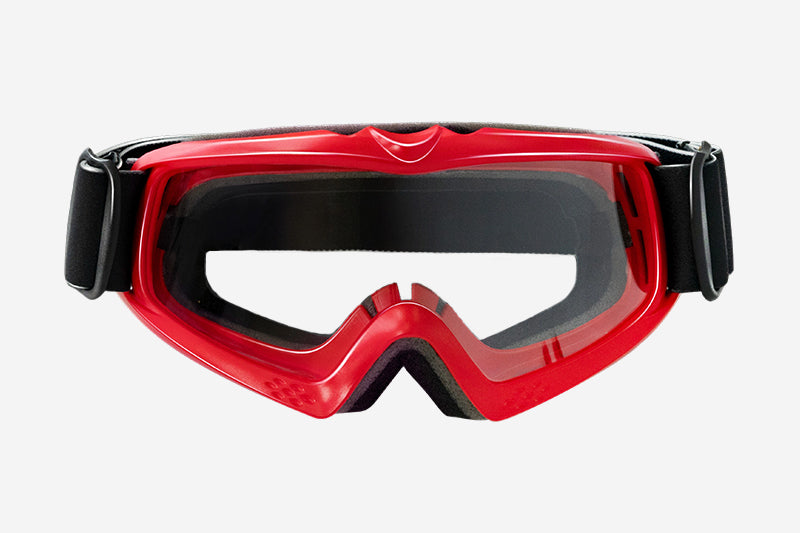Understanding Dirt Bike Parts for Maintenance and Safe Riding
Dirt riding is a thrilling sport that keeps people coming back for more thrills and adventures. Whether you're an experienced rider or just starting out, you need to know how a dirt bike works in order to keep it in good shape and ride safely.
Each part of a dirt bike has a specific role and helps the bike work and perform as a whole. In this guide, we'll look at the parts of a dirt bike and talk about how they work.
This guide will be helpful whether you're a dirt bike fanatic, a parent who wants to help your child learn to ride, or a beginner who wants to try out this exciting sport.
The Engine
The engine of a gas-powered dirt bike for kids is made so that the ride is both exciting and easy to handle. It uses the power of burning to make the force the bike needs to move forward.

Let's take a closer look at the engine and its key components:
- Cylinder Head
In a kids' gas dirt bike, the cylinder head plays a vital role in containing the combustion process and controlling the flow of gases. It houses the combustion chamber and valves that regulate the intake and exhaust of fuel and air mixture.
- Spark Plug
The spark plug is responsible for igniting the compressed air-fuel mixture within the combustion chamber. When the spark plug generates a spark, it ignites the mixture, creating a controlled explosion that drives the piston downward, converting the energy into motion.
- Piston
As the air-fuel mixture ignites, it creates a rapid expansion of gases, pushing the piston downward with force. The piston's motion is transmitted to the crankshaft, which converts it into rotary motion. This rotary motion is then transferred to the wheels, propelling the kids' gas dirt bike forward.
- Crankshaft
The crankshaft is a key component that converts the up-and-down motion of the piston into rotational motion. It transmits the piston's generated power to the transmission and ultimately to the wheels.
- Carburetor
The carburetor mixes the proper ratio of fuel and air, creating an optimal air-fuel mixture that is then supplied to the combustion chamber. The carburetor ensures that the engine receives the right amount of fuel for combustion.
The Frame
The frame gives the bike stability, longevity, and control. When it comes to kids' dirt bikes, it's important that the frame is well-made to make sure that riding is safe and fun.
Let's talk about how important the frame is and what its most important parts are on kids' gas-powered dirt bikes.
The frame of a gas-powered dirt bike acts as a strong and rigid structure that holds everything together. The frame also plays a crucial role in absorbing impacts and vibrations from the terrain, offering a smoother and more controlled riding experience.
A well-designed frame is especially important for dirt bikes for kids, as it needs to be lightweight yet sturdy enough to handle the demands of off-road riding. It should provide the necessary support while allowing young riders to maneuver the bike easily.

Gas-powered dirt bikes often feature frames made from high-quality materials such as steel or aluminum. These materials offer the required strength and durability to withstand the rigors of off-road riding.
Steel frames, in particular, are known for their exceptional durability and resilience, making them a popular choice for dirt bikes for kids. The strength of a steel frame provides added protection to the rider and vital components of the bike.
The Suspension
The suspension system of a dirt bike for kids is designed to absorb shocks, bumps, and vibrations, providing a more comfortable and controlled ride. It consists of several components that work together to maintain tire contact with the ground and improve traction.
- Front Suspension
The front suspension typically consists of forks, which compress and extend to absorb shocks and maintain consistent contact with the ground. This helps young riders navigate uneven terrain and obstacles more effectively, enhancing their overall riding experience on their dirt bike for kids.
- Rear Suspension
The rear suspension comprises shocks and springs that allow the rear wheel to move independently from the frame. This helps absorb impacts and keeps the rear tire in contact with the ground, maximizing traction and ensuring a smoother ride for young riders on their dirt bike for kids.

Shocks
The shocks absorb the energy from bumps and compressions, preventing excessive bouncing and ensuring a stable ride. Gas dirt bikes often feature high-quality shocks that offer superior damping capabilities, enhancing control and reducing fatigue for young riders.
Springs
The springs work in conjunction with the shocks to ensure a balanced and controlled ride. The springs can be adjusted or replaced to accommodate different rider weights and preferences, allowing for a customized suspension setup on gas dirt bikes for kids.
Wheels and Tires
wheels and tires of a kids' gas-powered dirt bike are vital components that greatly impact the bike's performance, traction, and overall control.
Importance of Wheels and Tires
The wheels and tires of a kids' gas-powered dirt bike are the direct connection between the bike and the terrain. They play a critical role in providing traction, stability, and control. The right choice of wheels and tires ensures optimal performance and enhances the overall riding experience.
Off-road tires with aggressive treads are commonly used on kids' gas-powered dirt bikes. These specialized tires are designed to grip various terrains such as dirt, mud, and gravel, providing the necessary traction for young riders to navigate through different environments.
- Tire Size and Profile
The tire size should be appropriate for the bike's frame and suspension setup, ensuring proper fitment and performance. It is important to choose tires that are suitable for the bike's intended use, whether it's trail riding, motocross, or other off-road activities.
- Tire Pressure
Young riders should regularly check and adjust tire pressure according to the manufacturer's recommendations. Proper tire pressure ensures proper tire contact with the ground, optimal traction, and better handling on their gas-powered dirt bike for kids.
- Tire Maintenance
Regular tire maintenance is necessary to prolong the lifespan of the tires and ensure consistent performance. This includes inspecting the tires for signs of wear, such as tread depth and sidewall damage.
- Wheel Construction
The wheels of a kids' dirt bike are typically constructed from lightweight yet durable materials such as aluminum alloy. These materials offer a balance between strength and weight, providing young riders with a responsive and maneuverable bike.
- Wheel Maintenance
Keeping the wheels clean and free from debris is essential for their longevity and performance. Regularly inspecting the wheels for any damage, such as cracks or bent spokes, is also important.
The Brakes
The brake system of a gas dirt bike consists of front and rear brakes that work together to decelerate and stop the bike effectively.
- Front Brakes
The front brakes on a gas dirt bike provide the majority of the stopping power. When the rider activates the front brake lever, it applies pressure to the front brake pads, creating friction against the front brake disc. This friction slows down the rotation of the front wheel, allowing for controlled deceleration and stopping.
- Rear Brakes
The rear brakes on a gas dirt bike for kids complement the front brakes, providing additional stopping power and stability. The rear brake system applies pressure to the rear brake pads when the rear brake pedal is depressed, creating friction against the rear brake disc or drum. This friction helps to slow down the rotation of the rear wheel, contributing to controlled deceleration and stopping.
- Types of Brakes
Gas dirt bikes for kids typically employ hydraulic disc brakes, which offer reliable and consistent stopping power. Hydraulic brakes use fluid pressure to transmit force from the brake lever or pedal to the brake caliper, squeezing the brake pads against the brake disc.
Other Parts and Accessories
There are several other important parts and accessories that contribute to the functionality and comfort of a kids' dirt bike.
Handlebars
The handlebars of a kids' dirt bike provide steering control and maneuverability. They allow young riders to steer the bike, navigate through obstacles, and maintain stability.
Foot Pegs
Foot pegs are an integral part of a kids' dirt bike, providing support and stability for the rider's feet. They allow young riders to securely position their feet while riding, providing a solid foundation for control and balance.
Chain
The chain on a kids' dirt bike transfers power from the engine to the rear wheel. It is an essential component for generating motion and propelling the bike forward.
Sprockets
Sprockets are connected to the chain and play a crucial role in the bike's gearing system. They determine the gear ratio, affecting the bike's speed and torque.
Seat
The seat on a kids' dirt bike provides comfort and support during rides. It is designed to allow young riders to maintain a proper riding position and reduce fatigue. The seat's ergonomic design and adequate padding contribute to a comfortable and enjoyable riding experience for young riders.
Wrap Up
Each part of a dirt bike has a specific role and helps the bike work and perform as a whole. Riders can keep their bikes in good shape and ride safely if they know everything there is to know about these parts.
Whether you're an experienced rider who wants to get better, a parent who wants to help their child get into dirt biking or a beginner who wants to try out this fun sport, you need to know how a dirt bike works. It gives riders the tools they need to take care of their machines, keep them in good shape, and ride with confidence.






































